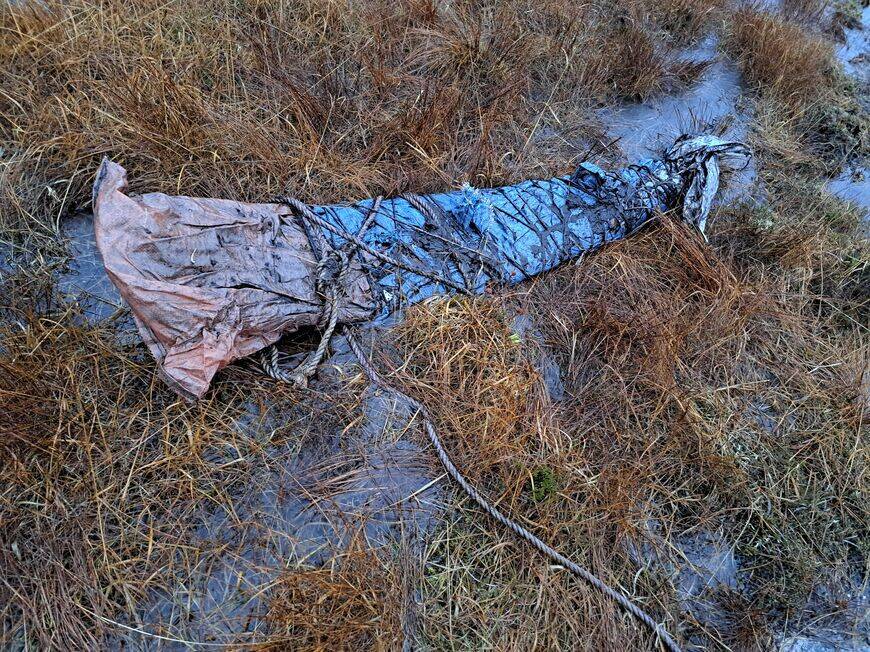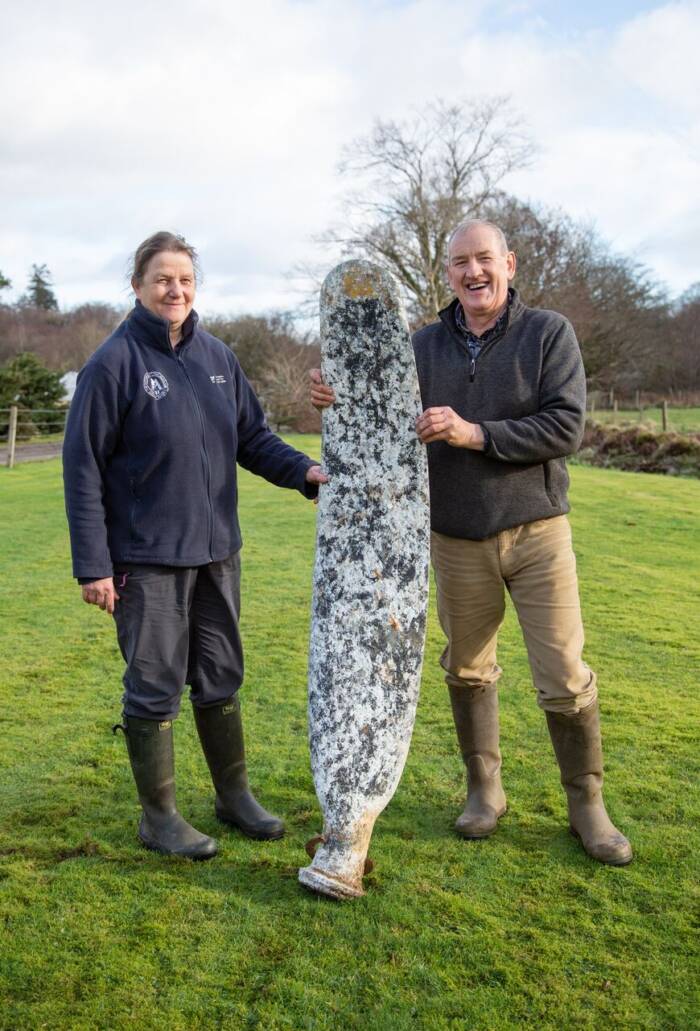Experts are attempting to determine what plane the propeller came from — and how it came to be wrapped in potato sacks.

National Trust for ScotlandThe World War II plane propeller found in a Scottish bog.
A contractor for the National Trust of Scotland (NTS) recently set out to Coire a’Bhradain, an isolated area on the Isle of Arran, to conduct a peatland restoration project. There, he stumbled upon a bizarre finding: a World War II plane propeller wrapped in potato sacks.
Researchers studying the object confirmed that the propeller originated from a World War II-era plane. Still, it was found far from recorded crash sites in the area, making its journey to its final resting spot a mystery.
Discovering The Plane Propeller

National Trust for ScotlandThe contractor accidentally struck the propeller while using an excavator.
The contractor accidentally dug up the propeller while using heavy equipment in the bog. At first, he feared that the potato sacks contained a dead body or had other dubious origins.
“I think our contractor got a bit of a shock when he saw the end of the potato sack sticking out of the bog as his first thought was that it could be human remains,” Kate Sampson, senior ranger for the NTS on the Isle of Arran, stated in the organization’s press release.
Researchers immediately descended on the scene, collecting the potato sacks and the plane propeller. Initial examinations determined that the propeller belonged to either a B-17 Flying Fortress or a B-24 Liberator, two planes that had crashed in the area during World War II.
Curiously, the potato-sack-covered propeller was tightly wound with rope, suggesting that someone had lugged the item around.
“With careful excavation, the wrapped propeller was revealed with a rope still tied around it, and we suspect someone might have been dragging the propeller down the hill when it sunk deep into the peat, not to be recovered until now,” Sampson commented.
A Curious Case Of Unknown Origin

National Trust for ScotlandResearchers stand next to their discovery.
The biggest question researchers asked about the propeller was how it ended up in the bog. According to the NTS, there have been six World War II-era crashes in the area, but none are within the vicinity of where the contractor discovered the propeller.
The closest crash sites involved a B-24 Liberator and a B-17 Flying Fortress. Researchers believe the propeller likely originated from one of these airplanes.
The B-24 Liberator crashed on Aug. 24, 1943, killing all 11 passengers. The B-17 Flying Fortress crashed on August 20th of the same year.
“[The B-17] is believed to be serial number 42-41030 of the Knox Provisional Group which crashed into the west side of Beinn Nuis, Arran, while inbound to Prestwick from Gander, Newfoundland, on 20 August 1943,” Paul Williams, a communications executive at the National Trust for Scotland, told All That’s Interesting in an email.
“[The propeller] may have been gathered during the clean-up of the site in the 1940s, immediately after the impact, or through subsequent work by the Trust in the 1980s,” Derek Alexander, Head of Archaeology for NTS, explained in the press release.
Unfortunately, researchers cannot remove items from the original crash sites for comparison due to the 1986 Protection of Military Remains Act.
“We are not permitted to remove wreckage from such sites without first obtaining permission — so the accidental discovery of a propeller blade, out with the known spread of fuselage debris, that had obviously been previously moved is quite an unusual situation,” Alexander stated.
“We are working with an aviation and aircraft expert to identify the objects, and there is potential to match up the serial numbers of the parts to historic records held by the military,” Alexander continued. “This will help us get closer to the origin of this fascinating discovery, continue to share these stories, and remember those who lost their lives.”
“It’s common to discover natural heritage stories when carrying out peatland restoration, but on this project it’s exciting that we have also been able to conserve and share elements of Scotland’s cultural history,” Paul Williams concluded to All That’s Interesting.
After reading about the discovery of the plane propeller in a Scottish bog, view 55 colorized photos that show the brutal reality of World War II. Then, read about the Night Witches, an all-female bomber regiment from the Soviet Union that terrorized Nazi Germany.





